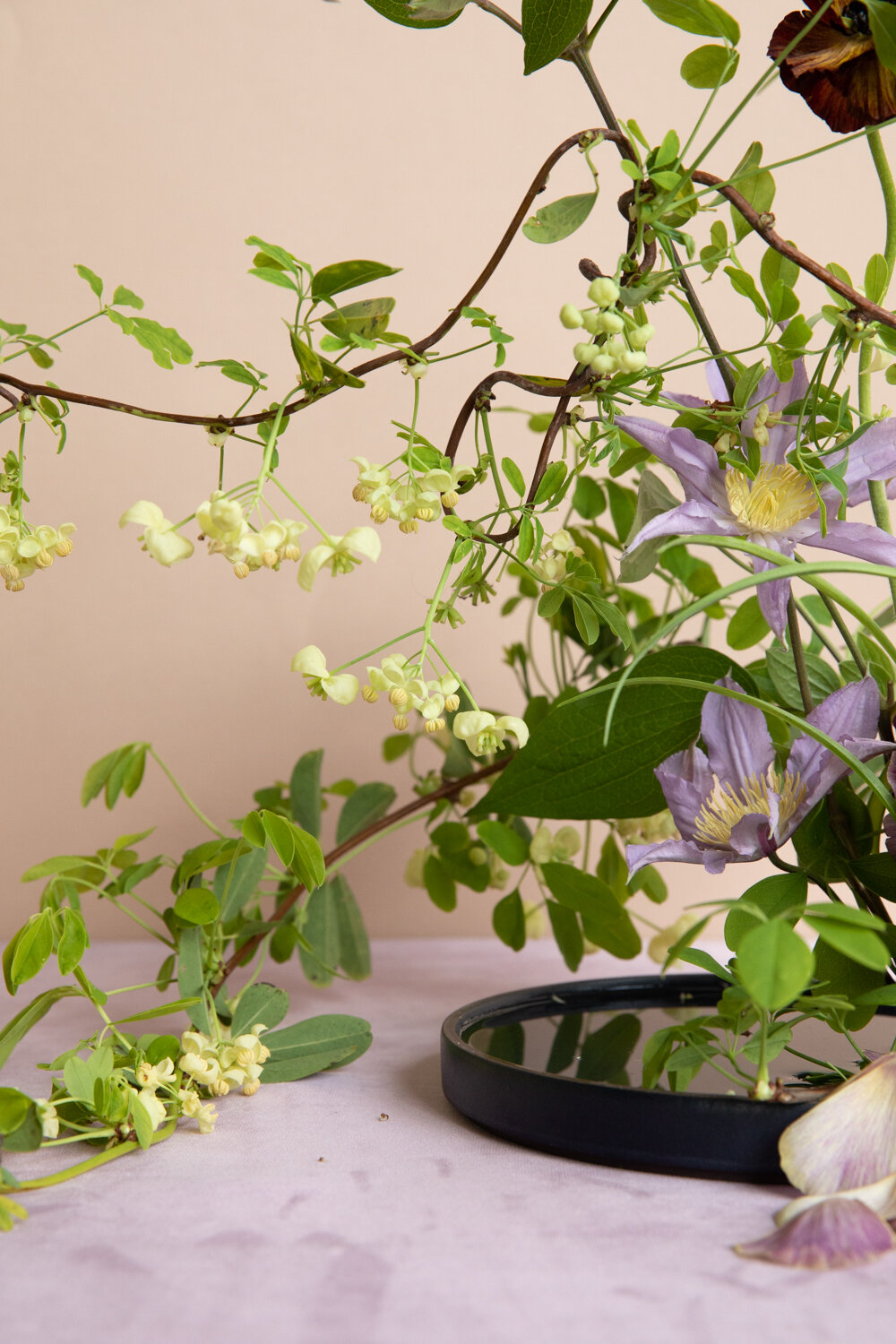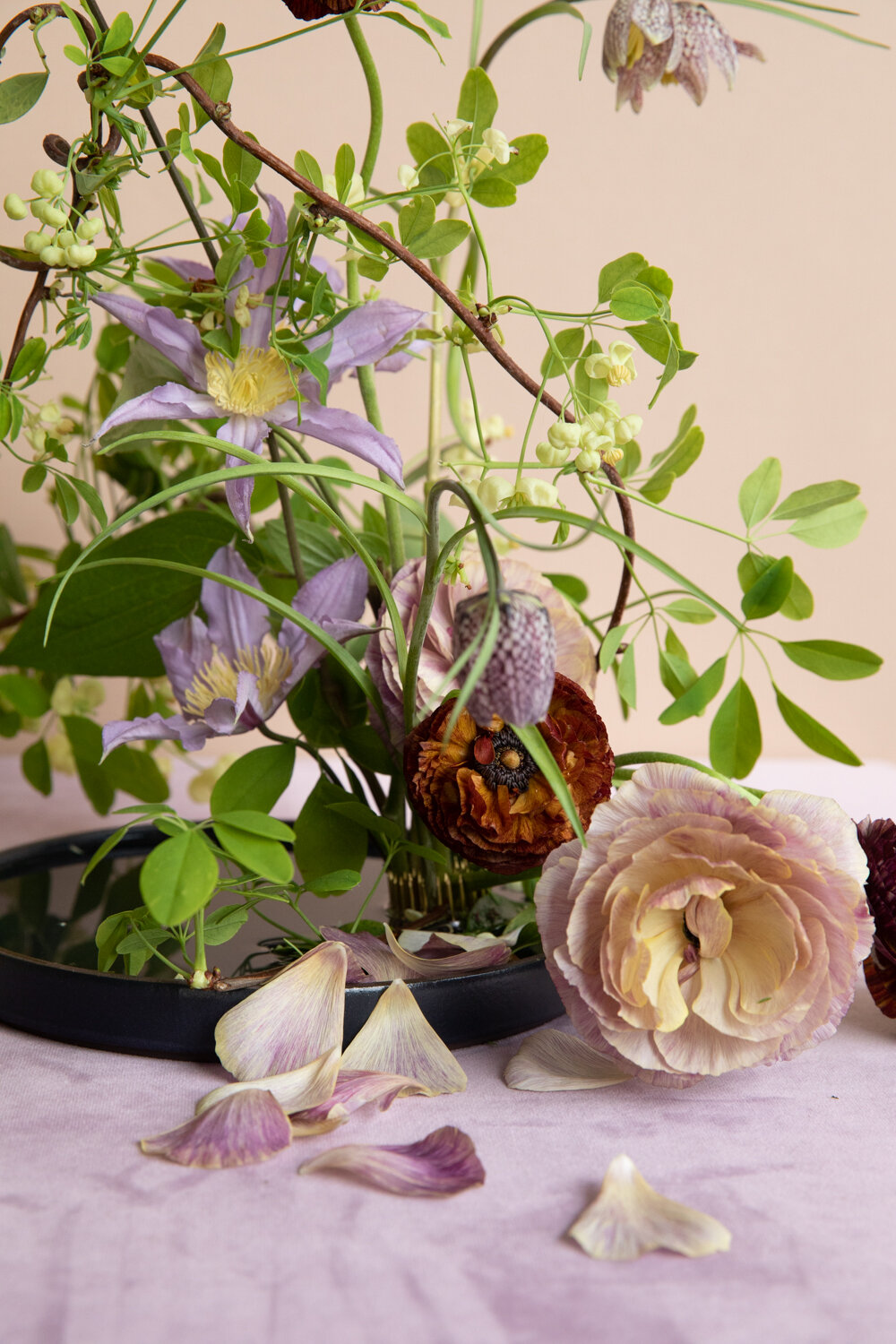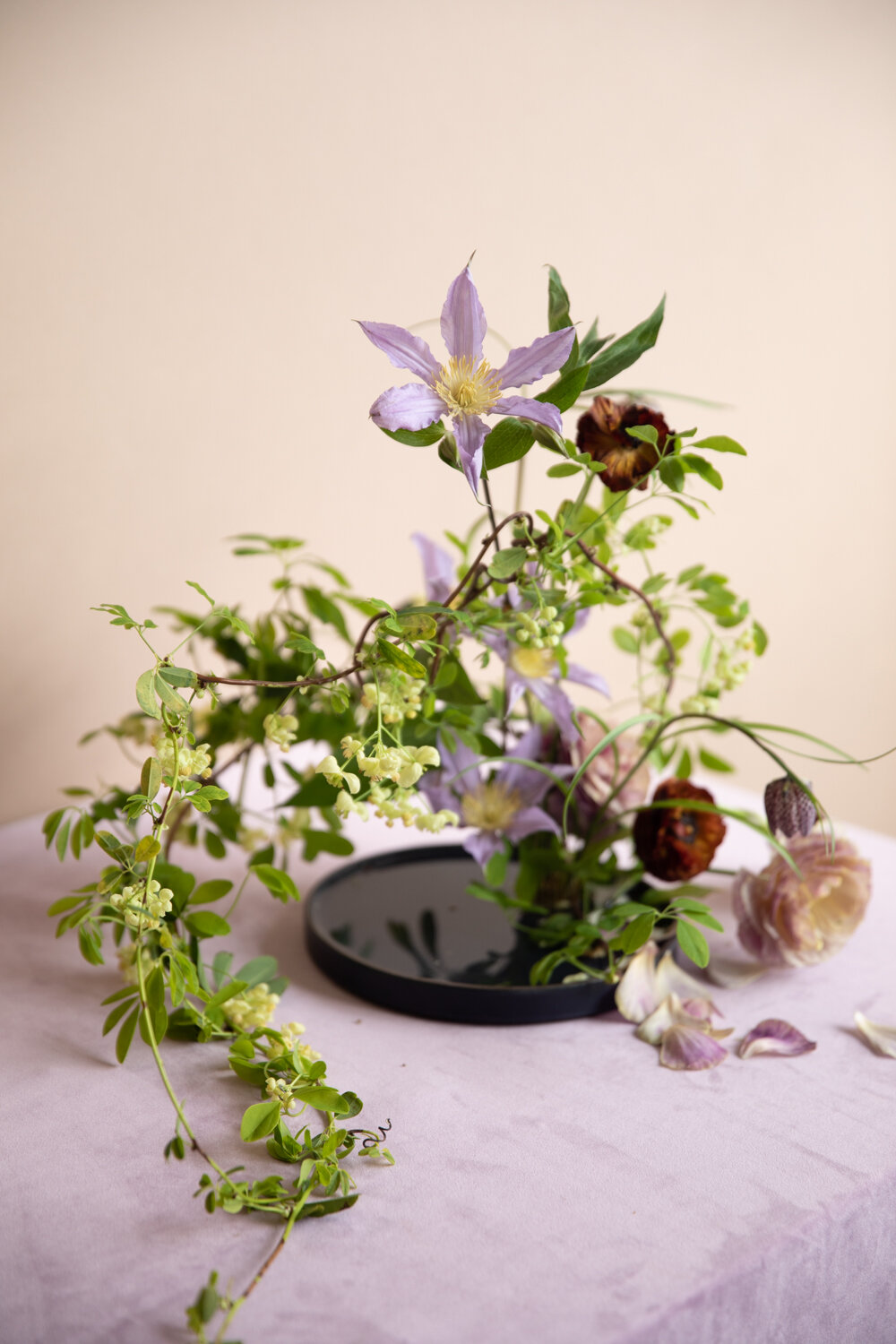Ikebana
Photo by MK Sadler
The Mindful Art of Flower Arranging
By Teagan Lehrmann
“Ikebana is the connection between humankind and the natural world”
A practice of observing the seasons, being in relationship with nature, and humbled by beauty, Ikebana has been redefining and shaping the world of floral artistry. You can easily spot the influence of Ikebana through the use distinctive asymmetric shapes, angular branches, and an embrace of simple, natural materials.
Ikebana, at its core, offers a framework for arranging flowers alongside other natural materials. But it is also so much more than that. Ikebana is a sculptural form of storytelling, capturing ideas and emotions in the curve of a branch, the cracked side of a vase, and the cascade of a leaf. Beyond a formula for making an aesthetically pleasing arrangement, Ikebana offers a philosophy of paring down, treading lightly, and creating meaning through natural materials.
Amanda Luu of Studio Mondine, a San Francisco based floral design studio and co-author of Ikebana Unbound: A Modern Approach to the Ancient Japanese Art of Flower Arranging (2020), believes that regular practice of arranging flowers can contribute to a life well-lived — as an art form, an exercise in minimalism, and a mindfulness practice.
Since its inception in 6th century Japan, thousands of different schools of thought have developed around the practice of Ikebana. While each school takes a different approach to the “rules” of the arrangement, they are each united in a shared, careful attention to the relationship between each item (every flower, branch, leave, and yes, even the vase!), and the desire to contribute to a larger narrative or theme through the practice.
While Luu, a self-taught designer, doesn’t claim any relationship to a specific school of Ikebana, it’s obvious how this philosophy influences the work of Studio Mondine, which she co-runs with longtime friend and collaborator, Ivanka Matsuba. Their approach is best described as a “modern interpretation” of the ikebana tradition, which has influenced the Studio’s ethos, narrative, and practice in a multitude of ways.
“Ikebana is exploring the connection between humankind and the natural world,” Luu tells us. “When in conversation with natural materials, you are in conversation with Ikebana, whether conscious or not.” Each new design or installation is an opportunity to create meaning beyond the flowers themselves. Luu and Matsuba two begin each new project by asking a series of introspective questions “Why are we putting these ingredients together? Why are we using this scale? What is the story we are trying to tell?” Ikebana offers a way into, rather than out of the questions.
Photo by MK Sadler
Having worked in the event industry for years, Ikebana offered Luu and Matsuba a way of thinking about floral design in a more intentional, “less is more” kind of way, that matched the duo’s shared values of sustainability and minimalism. “We’re on the brink of a climate disaster,” Luu admits, “we wanted to do our part to scale back and reduce our carbon footprint.” By celebrating simplicity, and a hand-made aesthetic through their designs, the studio is able to reduce their waste, attracting eco-minded clients.
When asked about the emerging “trend” of the Ikebana practice & style of arranging, Luu offers a contrary opinion. “Ikebana isn’t necessarily trending right now,” Luu muses, but “our collective longing to be close to nature has never gone away” -- it’s just become harder to access. There’s been a larger “shift towards sustainability, and stewardship for the environment,” and for an intimacy with natural materials. Our cultural desire to bring natural materials into the home is an obvious response to the increasing distance between society and nature.
Beyond any external value Ikebana may have, the real magic of this practice (according to Luu) is the degree of mindfulness and presence that it requires. The process of arranging stems and branches puts the practitioner in direct conversation with plants, the seasons, and with the limits of our control. When approaching a new design, Luu encourages her students to approach the arrangement with an “outcome neutral” mindset, allowing their designs to meet them - rather than coercing the materials into a preconceived form. In this way, we “come into relationship with the natural world, if we can get quiet enough to discover what we’re meant to discover.”
Through this practice of showing up and meeting the moment, Luu has tapped into a larger truth. “Flower arranging for me requires being in the room - that means truly being present to the task at hand.” The resulting moments of clarity “are a gift,” Luu says, and it’s my greatest joy to “invite everyone into those simple moments,” through her work.
Luu’s advice for someone new to practicing Ikebana, or flower arranging in general? “Just jump in there” and see what happens!”
We couldn’t agree more.
We are grateful for Amanda sharing her time and perspective on Ikebana with us, and are looking forward to incorporating more mindfulness into our flower arrangements at the Dry Farm Wines and A Matter of Taste Headquarters!
For more information on Studio Mondine, visit their website. Looking to try your own arrangement at home? check out A Modern Approach to the Ancient Japanese Art of Flower Arranging (2020). Let us know what you discover!
RESOURCES:
Luu, Amanda, et al. Ikebana Unbound: A Modern Approach to the Ancient Japanese Art of Flower Arranging. Artisan, a Division of Workman Publishing Co., Inc., 2020.
https://factsanddetails.com/japan/cat20/sub129/item2782.html








